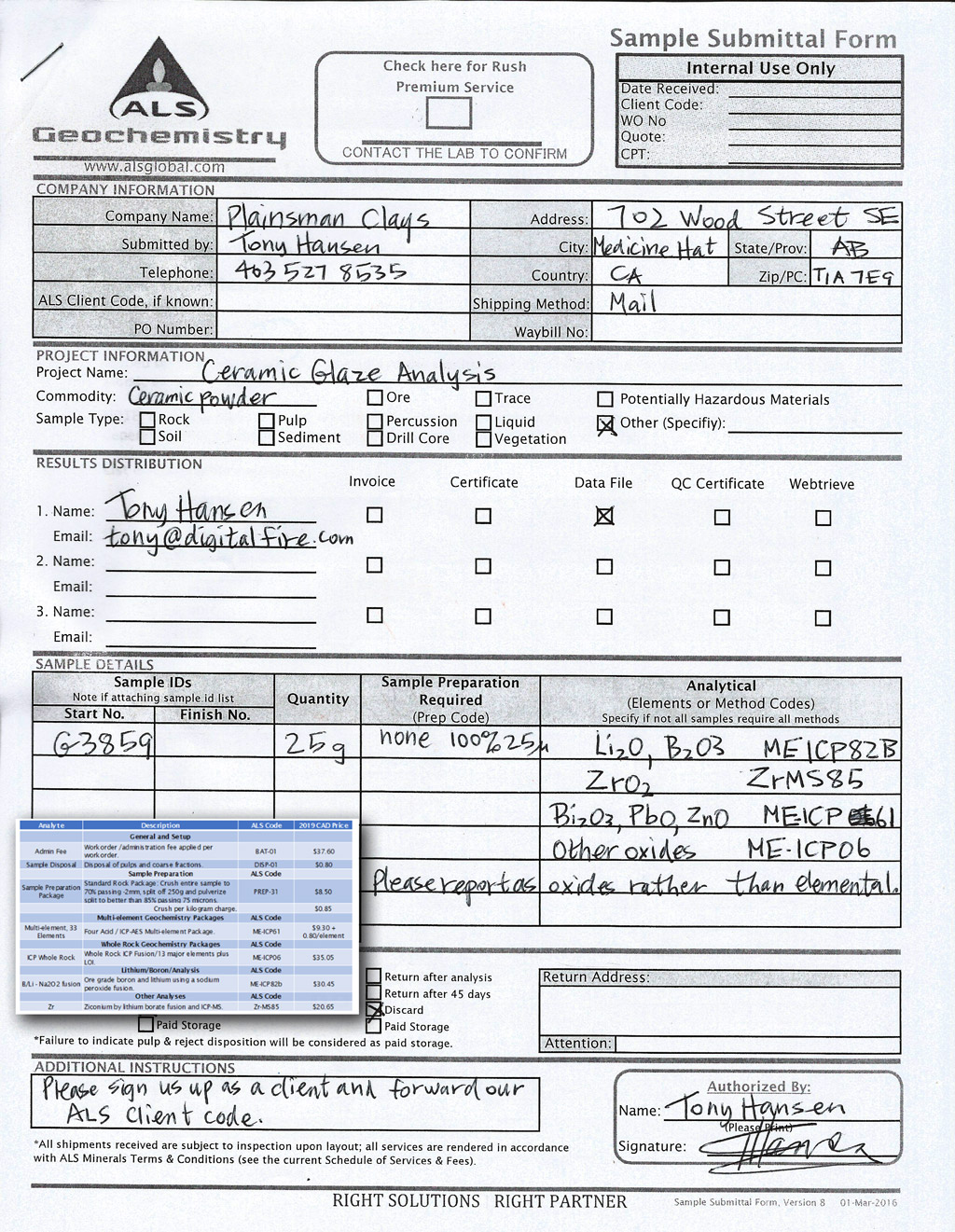| Monthly Tech-Tip | No tracking! No ads! |
How to reverse-engineer a commercial transparent glaze
The commercial cone 04 clear brushing glaze (on the left) works really well on our clay bodies so I sent it away to be analyzed (about $130). That revealed high Al2O3/SiO2 levels, this explains its resistance to crazing on our clay bodies and, even better, indicates high durability. In my account at insight-live.com I was able source the same chemistry from two Fusion frits (plus a little kaolin and silica). The melt fluidities are almost identical (my G3879 has a little more surface tension). I needed to make a dipping glaze version and chose a method that would produce a thixotropic slurry. One caution: An assay lab cannot analyze the complexities of a colored glaze, instead focus on the base clear and add stains to that. The first two-gallon bucket made saved the development cost plus more! And knowing the recipe made it possible to adjust for even lower thermal expansion. Another plus: I can now make my own low SG or high SG brushing version.
Related Pictures
Getting a chemical analysis of your ceramic powder

This picture has its own page with more detail, click here to see it.
I have 200 mesh powdered samples of ceramic glazes, mixes of minerals and man-made glasses. I need to know the percentages of B2O3, ZnO, Li2O, BaO, Bi2O3, MgO, CaO, Na2O, K2O, PbO, P2O5, SrO, ZrO2, Al2O3, SiO2 (some of these might not be present).
How and where to have a glaze tested to learn its chemical analysis

This picture has its own page with more detail, click here to see it.
Here are some of the papers I had to deal with to have a mystery colourless transparent glaze analyzed (so I can calculate a mix of my own materials to produce this chemistry). Since no one test will find all the 13 common oxides that may be present in low temperature colorless glazes I had to order three different ones (I also asked for bismuth). It ended up costing about $130. I found this lab was the best one to deal with (because ceramic materials are outside their experience, others worried about ruining their platinum crucibles). A couple of things to remember: Emphasize that you want the results in oxide format (not elemental). To avoid sample preparation costs, dry out some of the glaze slurry and crush in into a homogenous powder sample using a mortar and pestle (they only need a few grams, I did 20).
Videos
Links
| Recipes |
G3879 - Cone 04 Transparent Low-Expansion transparent glaze
A super transparent low fire base clear glaze created by reverse engineering a commercial product. |
| URLs |
https://insight-live.com/insight/share.php?z=wK2ZW14yNo
Five low fire glazes: Which is the best? |
| Glossary |
Kovar Metal
Kovar metal is thermal expansion compatible with borate glazes. You can actually glaze and fire it like pottery at cone 05, 06! |
| Glossary |
Glaze Chemistry
Glaze chemistry is the study of how the oxide chemistry of glazes relate to the way they fire. It accounts for color, surface, hardness, texture, melting temperature, thermal expansion, etc. |
| Glossary |
Transparent Glazes
Every glossy ceramic glaze is actually a base transparent with added opacifiers and colorants. So understand how to make a good transparent, then build other glazes on it. |
| Articles |
A Low Cost Tester of Glaze Melt Fluidity
Use this novel device to compare the melt fluidity of glazes and materials. Simple physical observations of the results provide a better understanding of the fired properties of your glaze (and problems you did not see before). |
Got a Question?
Buy me a coffee and we can talk

https://backup.digitalfire.com, All Rights Reserved
Privacy Policy

